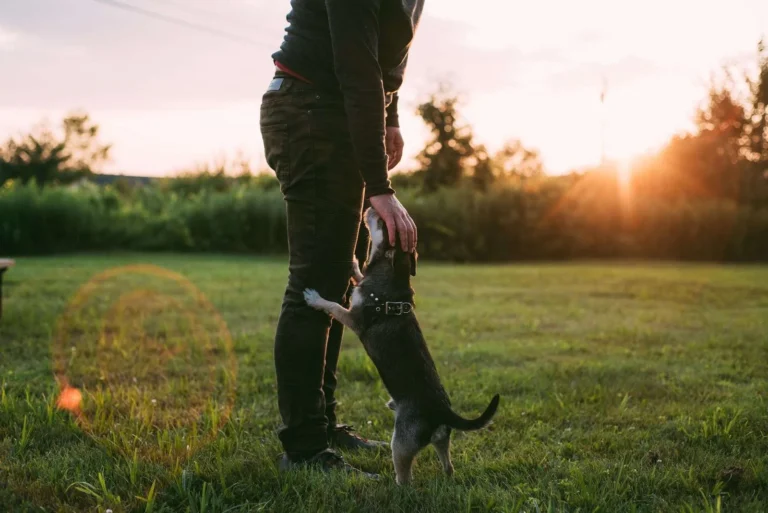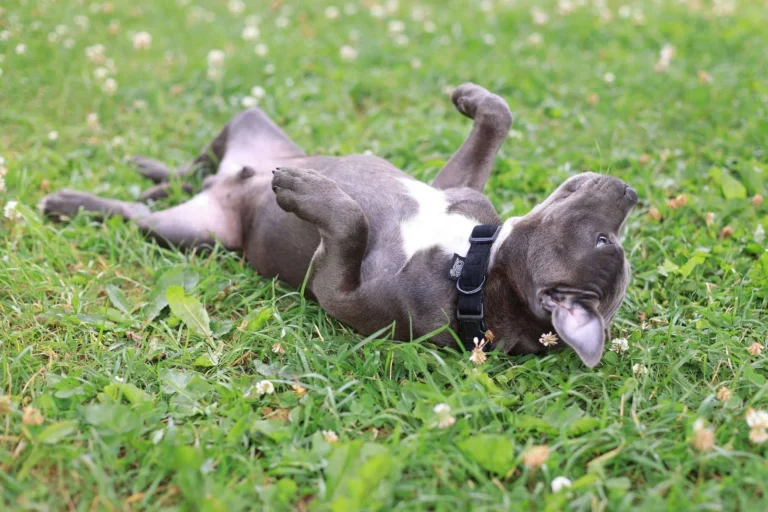How to Clicker Train a Dog
As an Amazon Associate, we earn from qualifying purchases.
This article features affiliate links, meaning we’ll earn a small commission if you purchase through these links at no extra charge to you. You can find our full Affiliate Disclosure HERE. Thanks for your support!
How to Clicker Train a Dog
Clicker training is an excellent method for teaching dogs new behaviours and commands. At its core, this technique uses a small handheld device, the ‘clicker’, to make a distinct clicking sound. This sound, followed promptly by a treat, is a powerful tool for positive reinforcement.
The popularity of clicker training lies in its simplicity and effectiveness. Unlike some training methods, it relies on positive reinforcement rather than correction or punishment. This approach not only strengthens the bond between you and your dog but also encourages a fun, engaging learning environment. This is the sort of environment you should look to create whenever you’re trying to train a dog.

Understanding the Basics of Clicker Training
A clicker, a small plastic device that emits a sharp, clear sound, is the cornerstone of clicker training. This unique sound, distinct from everyday noises your dog might hear, serves as a communication tool between you and your dog, with none of the nuances and inconsistencies involved with voice commands. Not only are they highly effective, but relatively cheap, too. At less than £5.00 for two like the ones pictured above, they are a small price to pay for the ability to train your dog!
We highly recommend this set of two. (paid link)
The effectiveness of clicker training rests on the principles of operant conditioning, a concept developed by psychologist B.F. Skinner. In this framework, behaviours followed by positive outcomes tend to be repeated. Using this method, the clicker’s sound becomes a marker, precisely indicating the moment a dog performs a desired behaviour. Followed quickly by a reward, usually a treat – especially when first beginning clicker training, it reinforces the behaviour, encouraging the dog to repeat it.
Be consistent
Timing and consistency are crucial in clicker training. The clicker’s sound must occur at the exact moment the desired behaviour is displayed, or at least within three seconds. This precision helps the dog understand which action is being rewarded. Consistency in using the clicker reinforces learning and prevents confusion. For instance, if a dog sits on command, the click immediately follows the sit, not before or after. This precise click, coupled with a reward, ingrains the desired behaviour.
One of the best aspects of clicker training is its adaptability. It suits dogs of all ages and breeds, addressing a range of behaviours from basic obedience to complex tricks. If you’re training an older dog, or any dog with a hearing deficiency, ensure he or she can hear the click before embarking on training! If you do have a deaf dog, there are other methods of training you can use.
Next, we’ll look at beginning clicker training with your dog.
Getting Started with Clicker Training
Beginning clicker training involves a few key steps. The first is selecting the right clicker. While most clickers function similarly, choosing one with a sound that is clear but not startling to your dog is crucial. Some clickers come with volume control, offering flexibility, especially for noise-sensitive breeds or nervous dogs.
Introducing the clicker to your dog is the next step. Start by associating the clicker’s sound with positive experiences. This can be done in a quiet, distraction-free environment. Press the clicker and immediately offer a treat. Repeat this several times until your dog expects the treat when it hears the click. This sound-reward association, known as ‘charging’ the clicker, is foundational. It teaches your dog that the clicker’s sound predicts something positive, laying the groundwork for future training.
Consistency is key
Once your dog recognises the clicker as a positive signal, establish a consistent training routine. Short, frequent training sessions are more effective than longer, infrequent ones. Aim for several 5-10 minute sessions throughout the day. Consistency in timing, the type of treats used, and the training environment helps reinforce learning and keeps your dog engaged.
A common misconception is that clicker training happens quickly. While some dogs may respond rapidly, others may take more time to understand the association between the click, the behaviour, and the reward. Patience and consistency are key. Celebrate even the smallest progress and remember that every dog learns at their own pace.
Next, we’ll learn how to teach basic commands using the clicker.
Basic Commands and Techniques For Clicker Training
Mastering basic commands is a critical aspect of clicker training. This process begins with simple, clear instructions, gradually building up to more complex tasks.
1. Teaching Basic Commands:
Practice each one before moving on to the next. You must be certain your dog understands one command before attempting to teach another.
Sit: Start with your dog standing in front of you. Hold a treat close to their nose, then slowly move your hand up and back, encouraging their head to follow the treat and causing their bottom to lower naturally. As soon as their bottom touches the ground, click and treat. The treat must come quickly, but not too soon – the dog must understand that it was the moment its bottom touched the floor it received the reward.

Stay: Ask your dog to sit, then open your palm in front of you and say “stay”. Take a step back. If they stay, click and treat. Gradually increase the distance and duration before the click and treat.
Come: With your dog at a distance, crouch down, open your arms wide, and say “come” in an enthusiastic tone. When they come to you, click and give them a treat.
Down: Ask your dog to sit. Hold a treat in front of their nose, then slowly bring it down to the floor between their paws, encouraging them to lie down. Once they are fully down, click and treat.
2. Positive Reinforcement:
Reinforcement isn’t just about treats. It can also be about giving praise, petting, or playing with their favourite toy. The key is to immediately follow the click with the reinforcement – whether that’s a piece of food or a belly rub.
Vary the rewards to maintain interest and prevent treat dependence. This variety keeps training sessions dynamic and engaging for your dog.
3. Troubleshooting Common Issues when clicker training your dog:
If your dog isn’t responding to a command, break it down into smaller steps and reinforce each step.
Be patient
Avoid frustration or impatience. If a session isn’t going well, end on a positive note with a command your dog knows well, and try again later.
If your dog seems disinterested, evaluate the training environment for distractions. Also, consider if they are hungry, tired, or not motivated by the chosen reward. My sister-in-law’s stubborn pug had no interest in learning to follow commands when she offered regular treats as a reward, but when she upgraded the reward to dried whitebait, Charlie soon learned what was required of him. He also developed a breath smell that a whale would have been proud of!
Teaching commands with a clicker can improve your communication with your dog and strengthen your bond. This foundation helps you both move forward to more advanced training.
In the next section, we’ll look into advanced clicker training techniques.
Advanced Clicker Training Techniques
After mastering the basics, advancing to more complex clicker training techniques allows you to explore the full potential of this training method. This phase involves building on foundational commands and introducing new challenges to your dog.
1. Building on Basics:
Chain behaviours: Once your dog has learned individual commands, start chaining them together. For example, ask your dog to ‘sit’, then ‘stay’, followed by ‘come’. Click and treat only after the complete sequence is performed correctly.
Introduce new tricks: Tricks like ‘roll over’, ‘play dead’, or ‘fetch’ can be taught using the same principles. Break each trick into smaller steps, click and treat for each successful step, and gradually require more for the treat.
2. Using Clicker Training for Behaviour Modification:
Addressing undesirable behaviours such as jumping or excessive barking can be managed through clicker training. When your dog is in a situation where they might display the unwanted behaviour, click and treat for calm or desired responses.
For instance, if your dog tends to jump on guests, click and treat them for sitting or staying calm when a guest arrives. This redirects their behaviour towards a positive action.
3. The Role of Patience and Persistence:
As you progress to more complex behaviours, remember that patience and persistence are vital. Some tricks or behaviour modifications might take longer to establish.
Consistency in your approach is crucial. Training sessions should still be short but can be more challenging. Always end on a positive note to maintain enthusiasm for both you and your dog.
4. Incorporating Distractions:
Start introducing controlled distractions to your training sessions. This helps your dog learn to focus and obey commands in various environments.
Begin with minor distractions, gradually increasing the level as your dog becomes more adept at maintaining focus. For instance – have somebody knock on your door while your dog is practicing his sit command.
Advanced clicker training not only reinforces basic commands but also enhances your dog’s cognitive abilities and responsiveness. This stage of training can be incredibly rewarding, as you experience an understanding between you and your dog.
In summary, clicker training is a powerful and versatile dog training tool. Using positive reinforcement principles not only strengthens the bond between dogs and their owners, but also promotes a fun and effective learning environment. From teaching basic commands to addressing complex behaviours, clicker training offers an achievable route to better communication and understanding between dogs and their owners.
The successes and transformations seen in dogs of all types and ages serves as proof of the method’s effectiveness. Whether you’re training a puppy, an energetic adult dog, or a senior pet, clicker training provides a rewarding way to help your dog understand what you want from it.
Thank you for reading, and good luck clicker training your dog!





